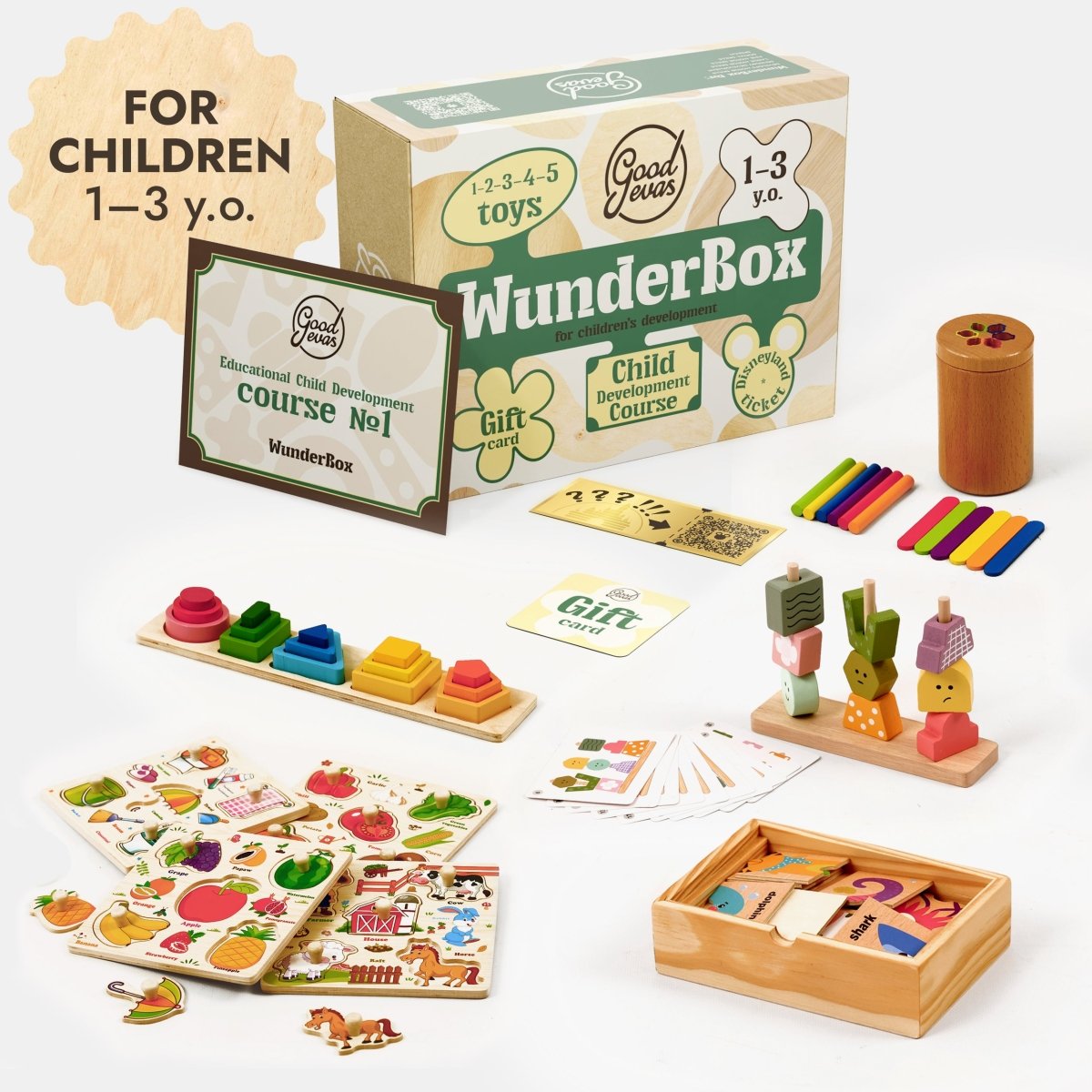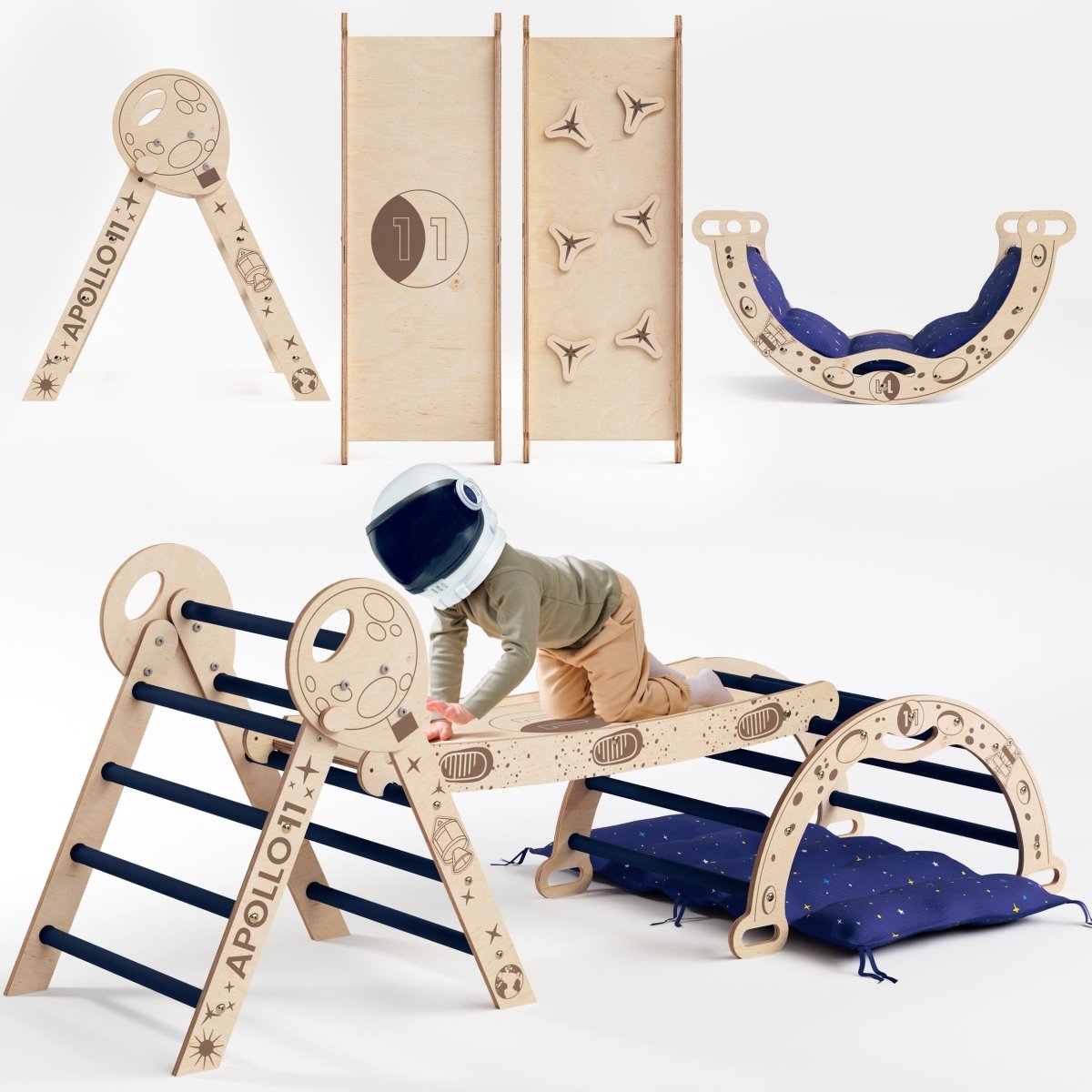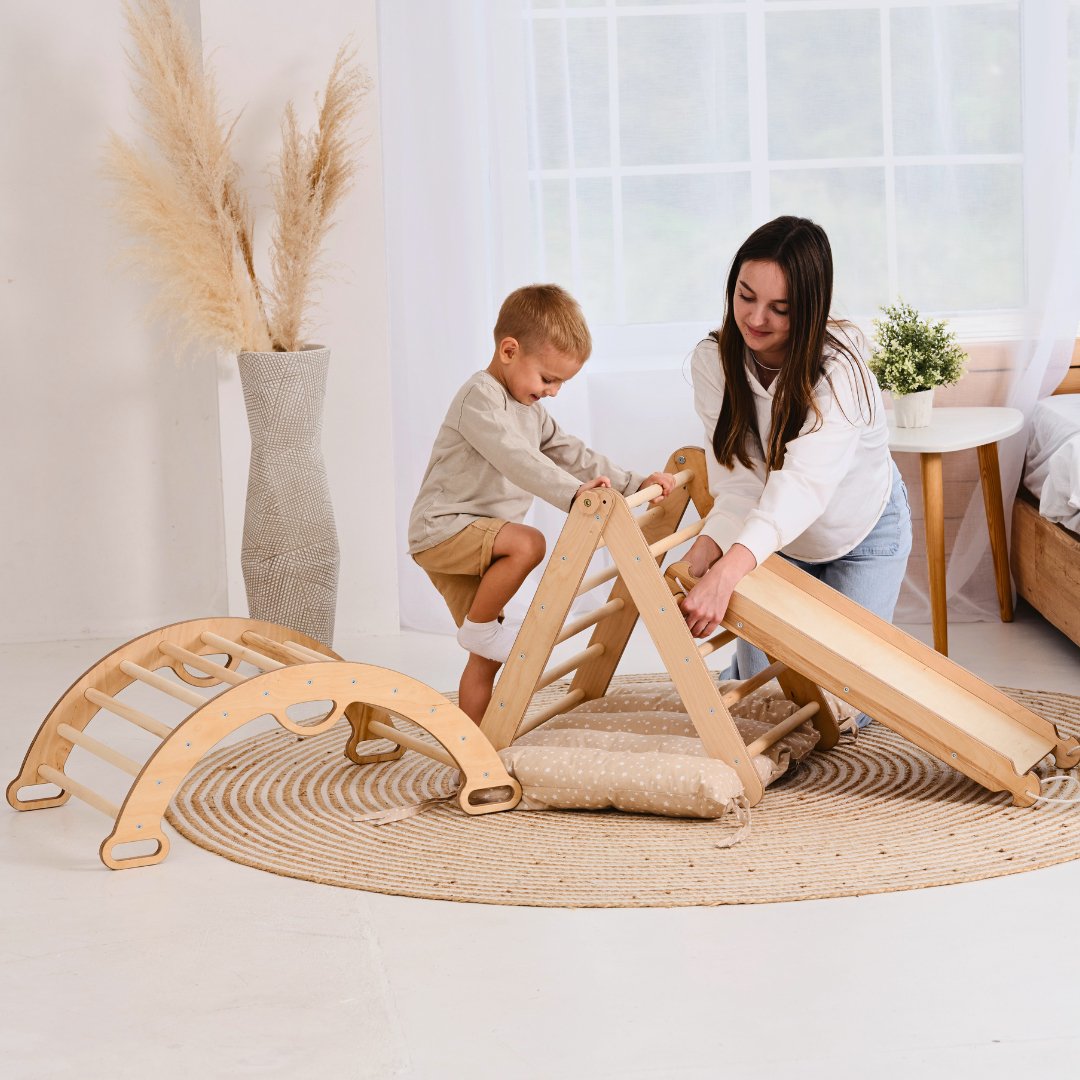Exploring the Senses: Montessori Toys and Sensory Development
Introduction
Dear readers, welcome to a world of Montessori toys! Whether you're a parent in pursuit of an enriching educational journey or someone seeking a gift that nurtures both heart and mind, the Montessori approach beckons with open arms. It invites your child to embrace the wonders of learning and exploration, fostering a lifelong love for education that harmonises beautifully with the rhythm of life. Without further ado, we invite you to witness firsthand the symphony of senses that Montessori toys orchestrate, nurturing your child's growth and imagination in ways that resonate deeply with their developmental needs :)
The Montessori method
At the heart of the Montessori philosophy lies a transformative approach to education that resonates deeply with parents seeking a holistic and engaging learning journey for their children. Developed by Dr. Maria Montessori, the method is founded on the belief that every child is born with an innate curiosity and a natural drive to explore the world. It's not merely an educational system; it's a way of life that values each child as a unique individual.

Source: Istockphoto.com
The Montessori method is a beautiful dance between structure and freedom, offering children a carefully prepared environment where they can learn at their own pace. In this vibrant space, children encounter a wide array of hands-on materials that invite exploration, creativity, and self-discovery. These materials are designed to stimulate the senses, from textured fabrics to colourful beads, allowing children to engage with concepts in a concrete and tangible way.
Central to the Montessori approach is the idea that children are active participants in their learning journey. Rather than being passive recipients of information, they become enthusiastic seekers of knowledge. Through self-directed activities, they develop a sense of agency and responsibility, which in turn nurtures their independence and decision-making skills.
In a world that can often feel fast-paced and overwhelming, the Montessori method offers a gentle haven where children can blossom into confident, compassionate, and capable individuals. So, whether you're a parent seeking an enriching educational path or someone looking for a gift that nurtures both heart and mind, the Montessori approach beckons with open arms, ready to inspire a lifelong love of learning and exploration.
The Sensory Symphony: How Montessori Toys Heighten Tactile Exploration
In the world of Montessori toys, every touch is an opportunity for discovery. From the gentle softness of fabric books to the cool, smooth touch of polished wooden climbing frames, Montessori toys offer an array of textures that ignite a child's curiosity. These meticulously crafted playthings are not just objects; they are key players in a symphony of sensory exploration that engages your child's sense of touch in a profound way.

Source: Goodevas.com
Designed with diverse textures, shapes, and materials, Montessori toys create a captivating landscape where young hands embark on a tactile adventure. Through touch, children refine their fine motor skills, honing the dexterity needed for tasks like writing, buttoning, and zipping. As their fingers explore the intricacies of different surfaces, they forge neural connections that foster hand-eye coordination and cognitive growth.
Moreover, Montessori toys offer a realistic view of the world. These toys are crafted from natural materials like wood, bringing the textures, warmth, and authenticity of nature into a child's hands. The use of natural materials not only engages a child's tactile senses but also connects them with the world around them in a tangible way. Each textured surface is an invitation to explore, a chance to uncover the mysteries of the world through their fingertips. Montessori toys understand that the journey of learning is a multi-sensory experience, and tactile exploration is a cornerstone of this journey.
Colours of Curiosity: Fostering Visual Stimulation and Discrimination
The beauty of Montessori toys lies in their deliberate use of colour as a tool for learning. These toys go beyond the surface, encouraging children to categorise, match, and differentiate. Through games that involve arranging objects by colour, children develop essential cognitive skills such as pattern recognition and logical reasoning. As they organise a spectrum of colours, they are also organising their thoughts and refining their ability to make connections.

Source: Istockphoto.com
The hues of Montessori toys are not random; they are purposefully chosen to spark curiosity and foster a keen sense of discrimination. Just as the world presents a multitude of colours, Montessori toys mimic this diversity, prompting children to observe and identify shades that are as rich and varied as their own experiences. The interplay of colours not only stimulates the visual senses but also encourages a deeper understanding of the relationships between objects.
Musical Melodies: Developing Auditory Perception and Rhythmic Awareness
In the enchanting world of childhood, every sound holds the promise of a melody waiting to be discovered. Montessori toys, with their harmonious blend of tones and rhythms, become guides on a musical journey that nurtures auditory perception and rhythmic awareness. Like a symphony conductor, these toys invite young minds to immerse themselves in the world of sound, fostering a deep connection between the child and the magic of music.
From the resonant chime of a xylophone to the gentle rhythm of a drum, each toy introduces children to the rich tapestry of sounds that surround them. The auditory journey is one of discovery – a chance to hear and appreciate the nuances of different tones, pitches, and rhythms.

Source: Istockphoto.com
The beauty of Montessori toys lies in their ability to foster auditory perception without inhibition. As children engage with these toys, their ears become attuned to the variations in sound, developing a heightened sensitivity to the world of auditory stimuli. This, in turn, lays a strong foundation for language development and communication skills. The subtle differences between notes become a language of their own, one that children learn to understand and appreciate.
Rhythmic awareness, an essential facet of musical development, finds its place in the realm of Montessori toys. Through toys that encourage tapping, clapping, or shaking, children learn to follow and create rhythms. These toys instil a sense of tempo and coordination, fostering an innate ability to understand the pulse of music and the rhythm of life.
Connecting with Nature
In the bustling journey of parenthood, we often find ourselves seeking ways to seamlessly integrate the wonders of nature into our little ones' lives.
When placed outdoors, a Montessori toy, a playhouse for instance, becomes a sanctuary where children can immerse themselves in imaginative play, surrounded by the very nature that sparked their curiosity. The soft rustling of leaves, the gentle caress of the wind, and the dappled sunlight filtering through branches—all become integral elements of the play experience. The playhouse becomes a canvas upon which their senses awaken—one moment, they're tracing the grooves of textured wooden walls, the next, they're admiring the colours of hand-painted leaves.

Source: Goodevas.com
This clever integration of nature into play serves a profound purpose. As our children interact with the Montessori playhouse, their senses are ignited. The touch of natural wood, the visual feast of intricate details, and the subtle scent of earthiness all collaborate to stimulate their sensory development. These toys offer a multisensory experience, enhancing their tactile perception, visual recognition, and olfactory awareness.
Final Thoughts
As we bid adieu to this exploration of Montessori toys and their transformative impact on sensory development, we are reminded of the profound beauty that unfolds when children are provided with the tools to explore, create, and discover.
“Education is not the filling of a pail, but the lighting of a fire" - William Butler Yeats
So, dear readers, let us embrace the Montessori philosophy with open hearts and open minds. Let us celebrate the joy of discovery, the wonder of tactile exploration, the harmony of colours, and the magic of musical melodies. Let us cultivate an environment where nature and play intertwine, enriching our children's senses and inspiring them to flourish as confident, compassionate, and capable individuals. As we journey together in the realm of Montessori, we sow the seeds of lifelong learning, curiosity, and a harmonious connection with the world around us.
References:
- Lillard, Angeline (2007) “Montessori: The science behind the genius”. Oxford University Press.
- Berk, Laura E. (2012) "Child Development," Pearson.
- Eliot, Lise (2000) “What's Going On in There?: How the Brain and Mind Develop in the First Five Years of Life,” Bantam Books.
- Rockingham Montessori School “What is Maria Montessori Theory?”
- https://rms.wa.edu.au/what-is-maria-montessori-theory/









Deixe um comentário